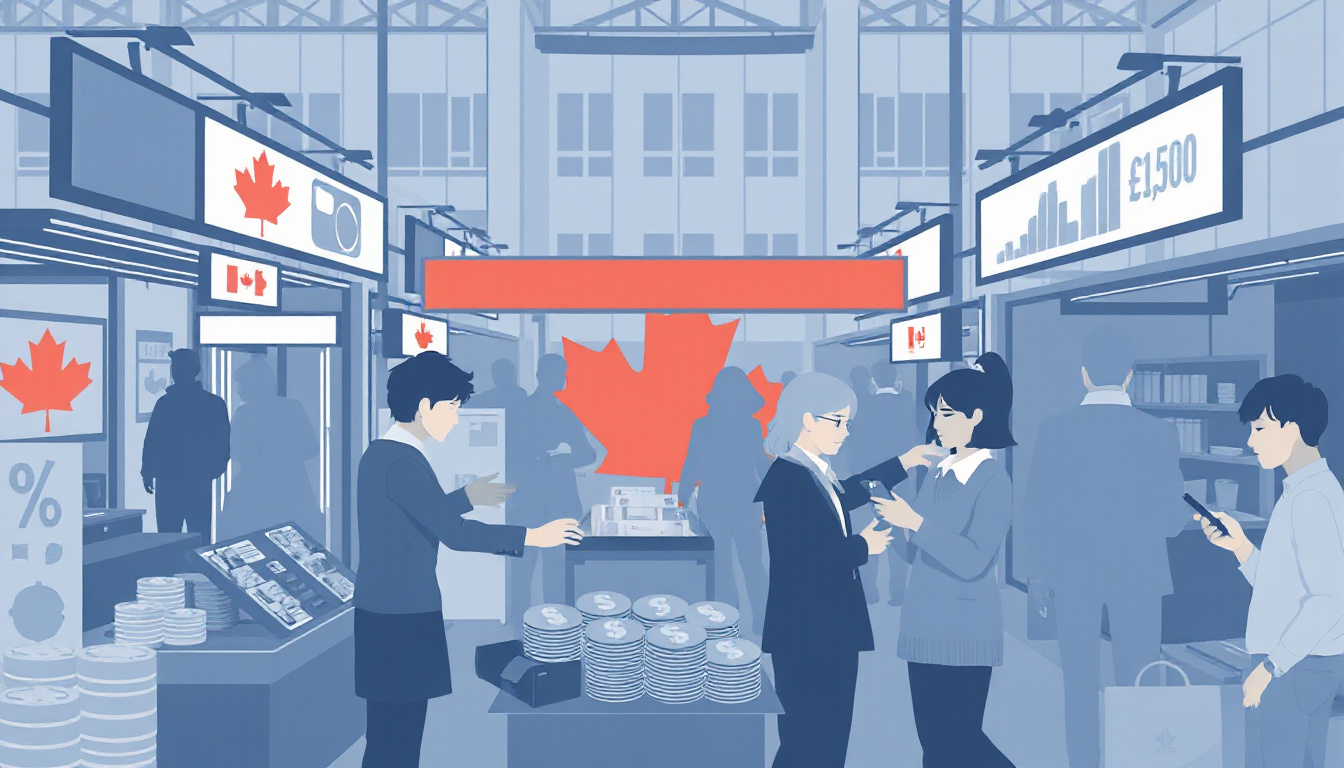Understanding the Rising Number of Canadians Behind on Payments: Causes and Solutions
As of 2023, approximately
4.2 million Canadians are reported to be behind on their payments, highlighting a significant challenge in the country’s financial landscape. This alarming statistic emphasizes the growing trend of payment delinquencies across Canada, which can be attributed to various factors including inflationary pressures and rising living costs. Understanding the number of Canadians behind on payments is crucial for both policymakers and those facing financial difficulties. In this article, we will dive into the current statistics on Canadians behind on payments, discuss key factors contributing to these delinquencies, explore the economic conditions affecting payment behavior, and outline practical solutions for Canadians dealing with these financial challenges.

Key Takeaways
- Recent statistics show a troubling increase in the number of Canadians struggling with payment delinquencies.
- Key factors like rising living costs and stagnant wages contribute significantly to this financial issue.
- Economic downturns exacerbate payment behaviors, leading to increased delinquencies among vulnerable populations.
- Understanding the impact of personal debt on financial health is crucial for addressing payment issues.
- Practical solutions, such as budgeting and financial counseling, can help Canadians regain control of their financial situation.
Current Statistics on Canadians Behind on Payments
As of 2023, approximately
1.5 million Canadians are reported to be behind on payments, highlighting a concerning trend in household financial stability. This figure, which represents about 5% of the Canadian population, has been steadily increasing due to rising living costs and inflationary pressures. According to data from the Canadian Bankers Association, many individuals and families are struggling to keep up with their debts, including mortgage payments, credit cards, and other loans. This increase in debt delinquency underscores the need for effective debt relief options and financial education. Comparing this to previous years, there has been a consistent upward trajectory in the number of Canadians facing payment difficulties, raising alarms among financial institutions and policymakers alike.
Key Factors Contributing to Payment Delinquencies
As of 2023, approximately
4.2 million Canadians are behind on payments, reflecting a significant rise in delinquencies triggered by factors such as inflation, rising interest rates, and economic uncertainty. Statistics Canada reports that this translates to nearly 14% of Canadian households struggling to meet their financial obligations. Many Canadians are faced with increased living costs, leading to a higher susceptibility to default on payments across various debts, including mortgages, credit cards, and personal loans. Notably, the Bank of Canada has noted a correlation between interest rate hikes and payment delays, emphasizing that as borrowing costs increase, so do incidences of payment challenges. This trend highlights the critical need for accessible debt relief solutions to support those affected.
‘In the end, the true measure of a financial crisis is not just numbers on a ledger, but the human stories behind those numbers.’ – Unknown

Impact of Economic Conditions on Payment Behavior
As of 2023, approximately
4.5 million Canadians are behind on payments, highlighting a significant trend in the country’s economic behavior. This statistic reflects the financial challenges faced by households amidst rising living costs and interest rates. According to Equifax, the number of Canadians in arrears has increased by 10% in the past year alone, underscoring the strain on personal finances. With economic conditions expected to remain volatile, these figures are a crucial indicator for policymakers and financial institutions aiming to understand and address the challenges of consumer debt in Canada. Understanding these trends can guide effective debt relief solutions and financial education programs that help Canadians regain control over their financial health.
Practical Solutions for Canadians Facing Financial Challenges
As of 2023, approximately
1.6 million Canadians, or
5.4% of the population, are behind on payments, highlighting a significant challenge faced by many households across the country. This statistic sheds light on the growing issue of financial distress among Canadians, prompting questions about budgeting practices, emergency funds, and the overall economic climate. According to Equifax Canada, this trend reflects the rising cost of living and the increasing burden of debt, as many individuals find themselves unable to keep up with monthly obligations. The implications are severe, not only impacting personal credit scores but also affecting overall economic stability. Moreover, with interest rates on the rise, it’s crucial that affected Canadians seek practical solutions, ranging from debt relief programs to financial counseling services. By addressing the root of their financial struggles, Canadians can reclaim control over their financial futures.
